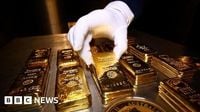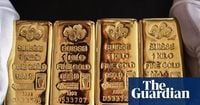Gold has long been the go-to asset when the world seems to tilt off its economic axis, but on September 2, 2025, even seasoned market watchers blinked in surprise as the precious metal soared past $3,500 per ounce, shattering previous records. The spot price hit a new high of $3,508.50 early in the day and climbed as high as $3,529.93 by mid-afternoon, according to Reuters. The surge, which marks a more than 30% gain since the start of the year, comes amid a swirl of global uncertainty, political tension, and shifting investor sentiment.
What’s fueling this feverish rush into gold? Analysts and traders point to a cocktail of economic anxieties and political drama. For starters, the U.S. dollar has been on the back foot, languishing near its lowest level in over a month against major currencies. This makes gold, which is priced in dollars, more attractive—and affordable—for overseas buyers. As Capital.com financial market analyst Kyle Rodda told Reuters, "A corollary of the weaker economic backdrop and expectations of US rate cuts is boosting precious metals."
But there’s another, more political ingredient in the mix: President Donald Trump’s ongoing public feud with the U.S. Federal Reserve. Trump has repeatedly lambasted Fed Chair Jerome Powell for not slashing interest rates quickly enough and recently took aim at Powell over costly renovations at the central bank’s headquarters. More dramatically, Trump has tried to fire Fed Governor Lisa Cook, citing allegations of mortgage fraud—an action that’s raised eyebrows and sparked concerns about the central bank’s independence. As Derren Nathan from Hargreaves Lansdown told BBC News, it’s Trump’s "attempts to undermine the independence of the Federal Reserve Bank" that are "driving renewed interest in safe haven assets including gold."
Those worries aren’t limited to U.S. shores. On Monday, European Central Bank President Christine Lagarde warned that any move to erode the Fed’s independence would represent a "very serious danger" to the global economy. She cautioned that if the Fed were forced to bend to political pressure, the consequences for economic stability could be "very worrying" not just for the U.S., but for the world. The market’s reaction? Investors have piled into gold, seeking shelter from the storm.
Expectations that the Fed will cut interest rates at its September 17 meeting are running high. The CME FedWatch tool puts the odds of a quarter-point rate cut at nearly 92%. Why does this matter? Gold doesn’t pay interest, so it tends to shine brightest when interest rates fall—suddenly, its lack of yield isn’t a drawback, and its reputation as a safe store of value takes center stage. As Suki Cooper, precious metals analyst at Standard Chartered Bank, explained to Reuters, "The gold market is entering a seasonally strong period for consumption, coupled with expectations for a rate cut at the September Fed meeting. We continue to expect new record highs."
Central banks themselves are helping to stoke the rally. According to Reuters, sustained purchases by monetary authorities and a broader move to diversify away from the U.S. dollar have helped underpin gold’s meteoric rise. The world’s largest gold-backed exchange-traded fund, SPDR Gold Trust, reported that its holdings jumped 1.01% last Friday to 977.68 tons—the highest level since August 2022. Natasha Kaneva, head of global commodities strategy at J.P. Morgan, noted that "central bank buying can continue to hold the floor for gold, but a re-ignition of ETF inflows is needed for prices to break out higher once again towards our bullish year-end target of $3,675/oz." JPMorgan even sees prices potentially reaching $4,250 by the end of 2026.
It’s not just institutional investors and central banks fueling demand. Traditionally, when gold prices jump, buyers in China and India—two of the world’s largest markets for gold jewelry—tend to pull back. This time, however, there’s a twist. As Adrian Ash, director of research at BullionVault, told BBC News, "Gold was continuing to find demand in China and India as, rather than exiting the market during times of high prices, jewellery buyers turn towards buying investment gold products such as bars or coins." This shift from adornment to investment is helping keep the rally alive.
Geopolitical tension is another key driver. Russia’s ongoing invasion of Ukraine, combined with changing global trade policies, has added to the climate of uncertainty. Suki Cooper from Standard Chartered cited "a raft of other reasons, including Russia's invasion of Ukraine which has added to a climate of general political uncertainty." Add to that the impact of shifting trade policies on inflation and supply chains, and it’s no wonder investors are looking for a safe port in a storm.
Market participants are also eyeing upcoming U.S. economic data for clues about the Fed’s next move. The all-important nonfarm payrolls report, due Friday, could influence the size of the expected rate cut. Zain Vawda, an analyst at MarketPulse by OANDA, remarked to Reuters, "A weak job print this week could reignite the conversation around the possibility of a 50 bps rate cut." While he doesn’t expect such a dramatic move, Vawda notes that "market participants may start to price in the possibility, and that could fuel the gold rally."
The rally isn’t confined to gold alone. Silver prices edged up to $40.84 per ounce, their highest since September 2011, while platinum and palladium prices held steady or dipped slightly. According to Reuters, U.S. gold futures for December delivery settled 2.2% higher at $3,592.20 on Tuesday.
Looking ahead, analysts are divided on just how high gold can go. Tim Waterer, chief market analyst at KCM Trade, told Reuters, "Gold’s rally could extend to $3,600 and even beyond by year-end if the Fed follows through with multiple rate cuts and if a Russia-Ukraine peace deal remains elusive." Others, like Natasha Kaneva at J.P. Morgan, see the potential for prices to reach $4,250 in the next year or two if current trends persist.
For now, the message from the world’s financial markets is clear: uncertainty is in the air, and gold is back in the spotlight. Whether this record-breaking run continues will depend on a delicate dance of central bank policy, political drama, and global stability. But for investors seeking a safe haven, the allure of gold has rarely gleamed brighter.


